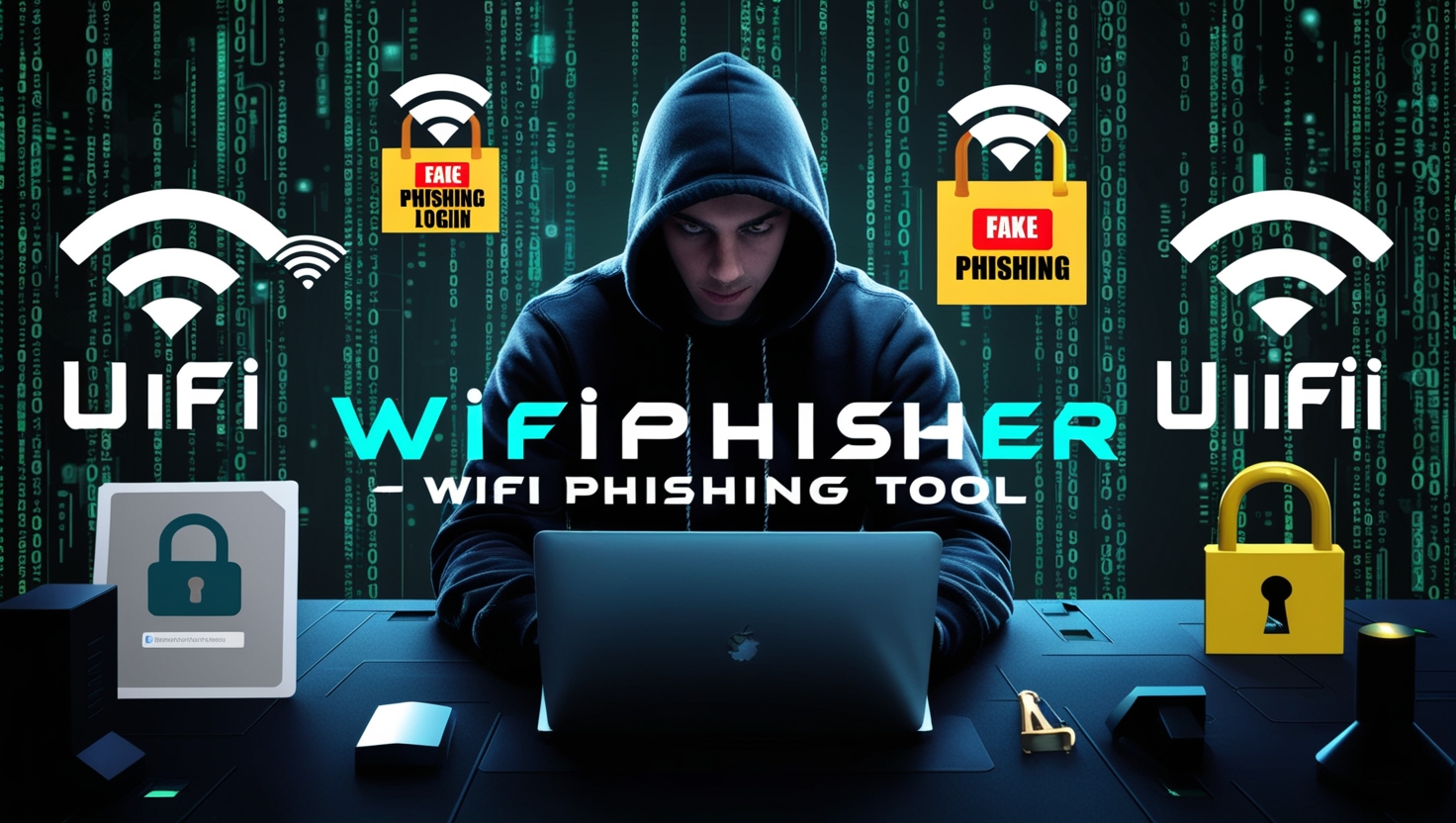1️⃣ 🔍 What is Wifiphisher?
Wifiphisher is a powerful open-source tool designed for conducting WiFi phishing attacks. It’s primarily used by penetration testers and ethical hackers to simulate real-world phishing scenarios on wireless networks. Instead of cracking passwords like traditional tools, Wifiphisher focuses on social engineering attacks by setting up fake access points to trick users into entering credentials or installing malware.
In essence, Wifiphisher is the go-to tool for testing the human element of wireless security—making it a unique and vital asset in any security toolkit.
2️⃣ 💡 How Wifiphisher Works: A Step-by-Step Breakdown
Wifiphisher operates by launching what’s known as an Evil Twin attack. Here’s how it typically works:
- Scan Nearby WiFi Networks: The tool scans for available wireless networks.
- Deauthenticate Clients: Wifiphisher sends deauthentication packets to disconnect users from their real network.
- Create a Fake Access Point: It then creates a rogue access point with the same SSID as the real one.
- Redirect to a Phishing Page: When users reconnect, they’re redirected to a fake login page or malware download.
- Collect Data or Exploit: If users input credentials or download software, attackers can gain access or control.
This method doesn’t rely on brute-force tactics. Instead, it exploits human behavior, making Wifiphisher highly effective for social engineering.
3️⃣ 🎯 Key Features of Wifiphisher
Wifiphisher comes packed with features that make it a favorite among cybersecurity professionals:
- 🔧 Modular Phishing Templates: Customize phishing pages for credential harvesting, firmware updates, or browser plugin installation.
- ⚙️ Plugin Support: Extend functionality using Python-based plugins.
- 🔁 Automatic Channel Hopping: Keeps track of changing APs and ensures successful deauthentication.
- 🌐 Multiple Attack Modes: Includes Evil Twin, Known Beacons, and Karma attacks.
- 📡 Fake AP Cloning: Mimics real networks down to SSID, MAC address, and encryption type.
These features make Wifiphisher versatile, scalable, and highly effective for realistic wireless phishing simulations.
4️⃣ 🧪 Common Attack Scenarios Using Wifiphisher
Wifiphisher is frequently used in red team operations and security assessments. Some common scenarios include:
- 👤 Credential Harvesting: Users are shown a fake login page asking for WPA2 credentials or enterprise login details.
- 📦 Firmware Upgrade Attacks: Users are prompted to “update” router firmware, which is actually malicious software.
- 🔌 Fake Plugin Installs: Targets are tricked into downloading a malicious browser plugin to gain further access.
Each of these attacks can be executed without needing a password for the target network, leveraging social engineering rather than brute force.
5️⃣ ⚙️ Installing Wifiphisher on Kali Linux
Installing Wifiphisher on Kali Linux is straightforward. Kali comes pre-installed with most dependencies, making setup easier. Here’s how to install it:
sudo apt update
sudo apt install wifiphisherAlternatively, you can clone it from GitHub:
git clone https://github.com/wifiphisher/wifiphisher.git
cd wifiphisher
sudo python3 setup.py installMake sure your wireless adapter supports monitor mode and packet injection, as Wifiphisher depends on these functionalities.
6️⃣ 🛠️ Basic Wifiphisher Commands and Usage
Once installed, using Wifiphisher is as simple as launching a command in the terminal:
sudo wifiphisher
This launches an interactive interface where you can:
- Select the network to target
- Choose the type of attack (e.g., firmware update, credential phishing)
- Launch the phishing attempt
For a specific attack template:
sudo wifiphisher --phishing-script firmware-upgrade
This command starts an attack that tricks users into thinking their router needs an update.
7️⃣ 🧠 Social Engineering in Wifiphisher Attacks
What sets Wifiphisher apart is its emphasis on social engineering. Instead of hacking the network, it hacks the user.
- 🧑💻 Users are presented with legit-looking interfaces mimicking router portals or captive portals.
- 🧾 They often don’t question why they need to log in again.
- 🔓 This psychological manipulation is at the heart of Wifiphisher’s success rate.
It proves that even the most secure systems can be compromised if the human element is not properly educated and protected.
8️⃣ 📶 Evil Twin Attack vs. Wifiphisher: What’s the Difference?
An Evil Twin Attack involves setting up a rogue access point with the same SSID as a legitimate network, tricking users into connecting.
Wifiphisher takes this a step further:
- It automates the Evil Twin process
- Adds tailored phishing templates
- Automates deauth and credential collection
So while an Evil Twin is part of the Wifiphisher strategy, the tool’s strength lies in streamlining the entire attack pipeline, making it more efficient and effective.
9️⃣ 🔒 How to Defend Against Wifiphisher Attacks
Defense against Wifiphisher requires a combination of technical and human-focused strategies:
- 🔐 Use WPA3 if available – it’s harder to spoof.
- 📱 Educate Users on spotting fake login pages and suspicious updates.
- 🛡️ Monitor for Rogue APs using tools like Kismet or Airgeddon.
- 🧩 Implement Multi-Factor Authentication (MFA) to reduce the impact of stolen credentials.
Ultimately, raising awareness and promoting cyber hygiene among users is key to preventing these attacks.
🔟 ⚖️ Is Wifiphisher Legal? Ethical Considerations and Penetration Testing
Wifiphisher, like many pentesting tools, exists in a gray legal area. Its use is only legal when:
- ✅ Performed with explicit permission
- ✅ Used in authorized penetration tests
- ✅ Part of a red team operation
Using Wifiphisher against unsuspecting targets without consent is illegal and unethical. Ethical hackers must always ensure compliance with laws and guidelines like those outlined in the Computer Fraud and Abuse Act (CFAA) or GDPR.
✍️ Conclusion
Wifiphisher is a powerful tool that highlights the importance of human behavior in wireless security. By simulating realistic phishing attacks, it allows penetration testers to assess how vulnerable a network and its users are to deception. From its installation on Kali Linux to executing social engineering attacks, Wifiphisher is a must-have in any ethical hacker’s arsenal.
However, with great power comes great responsibility. Ensure that Wifiphisher is used only in environments where testing is authorized, and always strive to improve defenses—not just exploit weaknesses.

Leave a Reply